 Project Mercury
Project Mercury Project Gemini
Project Gemini Project Apollo
Project Apollo Space Shuttle
Space Shuttle
This page contains a graphical history of the space suits used by NASA. The manned space programs, in chronological order, covered are:
 Project Mercury
Project Mercury
 Project Gemini
Project Gemini
 Project Apollo
Project Apollo
 Space Shuttle
Space Shuttle
Project Mercury
Initiated in 1958, completed in 1963, Project
Mercury was the United States' first man-in-space program.
The objectives of the program, which made six manned flights
from 1961 to 1963, were specific:
 Enos, a chimpanzee,
Enos, a chimpanzee,
in his custom-designed space suit.
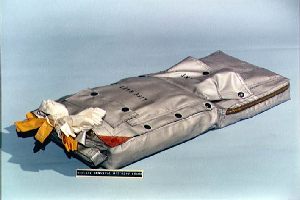 Survival kit used by Mercury astronauts
Survival kit used by Mercury astronauts
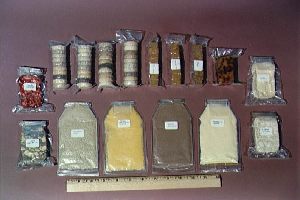 Food package used by Mercury astronauts
Food package used by Mercury astronauts
 Group portrait of Mercury Program astronauts
Group portrait of Mercury Program astronauts
 Astronaut Alan P. Shepard, Jr. in his Mercury pressure suit
Astronaut Alan P. Shepard, Jr. in his Mercury pressure suit
Like Mercury's, its major objectives were clear-cut:
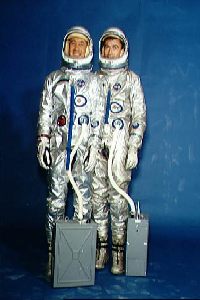 Gemini astronauts in full pressure suits.
Gemini astronauts in full pressure suits.
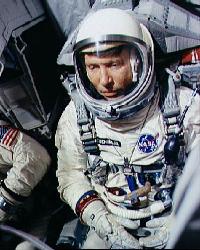 Astronaut Walter Schirra in the Gemini VI spacecraft.
Astronaut Walter Schirra in the Gemini VI spacecraft.
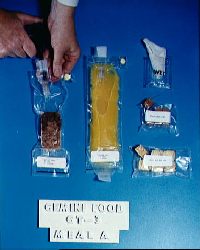 Food packets for use on Gemini spacecraft.
Food packets for use on Gemini spacecraft.
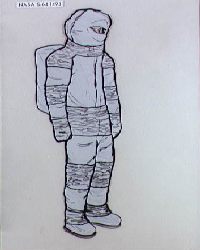 Artist's concept of prototype Apollo space suit
Artist's concept of prototype Apollo space suit
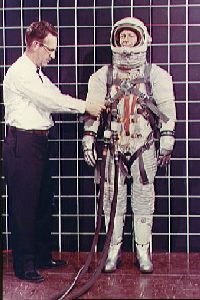 Space suit A-3H-024 with Lunar Excursion
Space suit A-3H-024 with Lunar Excursion
Module astronaut restraint harness
 Test subject wears overgarment designed for use on lunar surface
Test subject wears overgarment designed for use on lunar surface
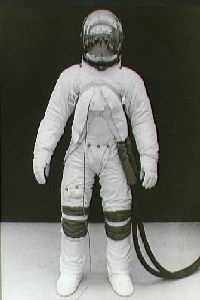 Test subject models uprated Apollo A6L pressure suit
Test subject models uprated Apollo A6L pressure suit
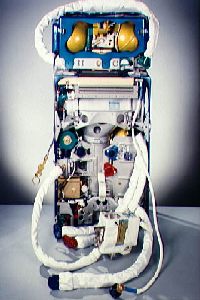 Cutaway of life support pack for Apollo space suit
Cutaway of life support pack for Apollo space suit
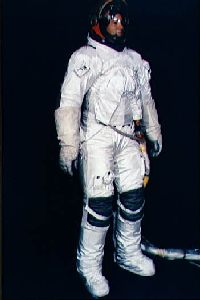 Astronaut John Bull wears the A6-L type pressure Garmet Assembly
Astronaut John Bull wears the A6-L type pressure Garmet Assembly
 Two astronauts check the mobility of two different types of Apollo space suits
Two astronauts check the mobility of two different types of Apollo space suits
 Astronaut John Bull wears newly designed Apollo pressure suit
Astronaut John Bull wears newly designed Apollo pressure suit
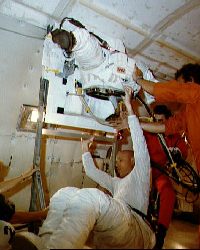 A Shuttle astronaut practices donning an EVA suit in a weightless
environment aboard NASA's KC-135 aircraft.
A Shuttle astronaut practices donning an EVA suit in a weightless
environment aboard NASA's KC-135 aircraft.
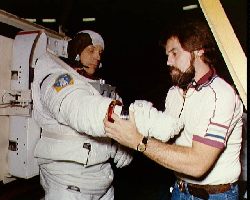 A Shuttle astronaut receives assistance while donning an
EVA suit.
A Shuttle astronaut receives assistance while donning an
EVA suit.
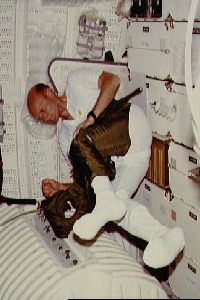 A Shuttle astronaut donning a dark green "G suit."
A Shuttle astronaut donning a dark green "G suit."